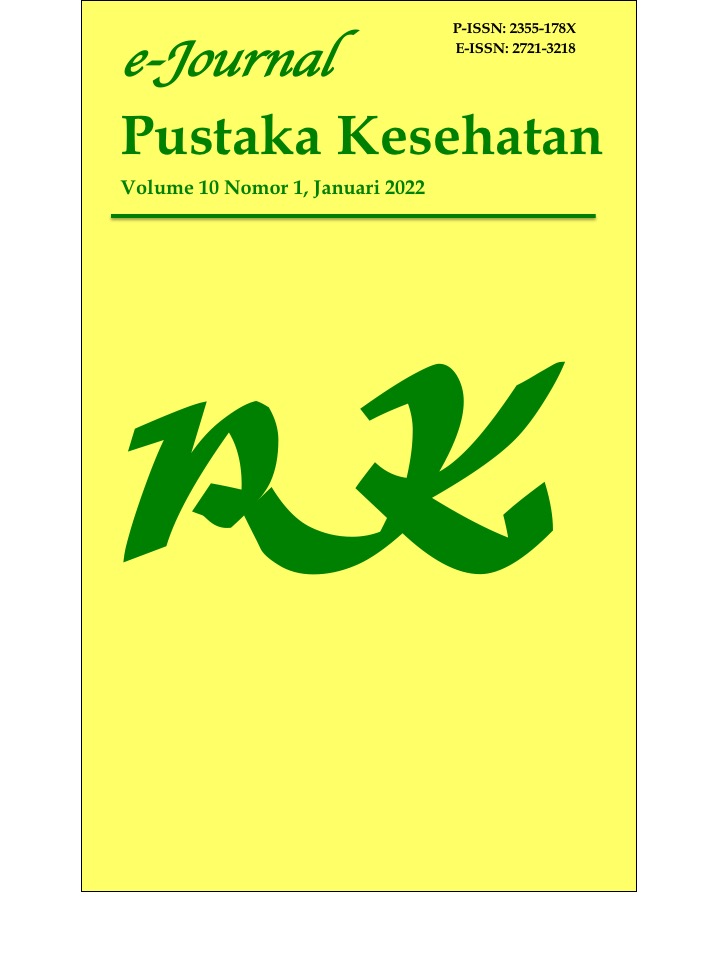Optimasi Jumlah Etil Selulosa dan Kecepatan Pengadukan dalam Preparasi Hollow Microspheres Kaptopril
DOI:
https://doi.org/10.19184/pk.v10i1.11912Keywords:
Hollow microspheres captopril, ethyl cellulose, stirring speed, non-aquoeous solvent evaporation, factorial designAbstract
Captopril is an Angiotensin-Converting Enzyme inhibitor (ACE Inhibitor) used for the treatment of hypertension. It has been reported that the duration of antihypertensive action after a single oral dose of captopril is only 6–8 h, specific absorption in the stomach, stable at acidic pH and degraded at high pH. These indicate a promising potential of the captopril hollow microspheres system as an alternative to the conventional dosage form. The preparation method used in this study is non-aqueous solvent evaporation. This study aims to determine the amount of ethyl cellulose (EC) and stirring speed to produce hollow microspheres having entrapment efficiency (EE), buoyancy and particle size maximum. Determination of the optimum hollow formula microspheres captopril uses a design factorial of two factors at two levels. The factors used in this study were the amount of EC and stirring speed, while the observed response was EE, buoyancy and particle size. The chosen optimum formula will be verified and characterized (yield, SEM, FT-IR). Formula AB was the optimum formula with EE 90.68%, buoyancy 81.52% and particle size 267.10µm. The verification obtained results in accordance with the prediction of the Design-Expert software. The characterization results obtained a yield value of 98.33%, with a spherical shape, uneven surface morphology, and hollow core. The results of FT-IR analysis showed that there was no interaction between the drug and polymer used in the formulation.
Downloads
References
[2] Brahmareddy, D. R., P. R. Kumar, dan G.V. Kumar. 2016. Formulation and evaluation of microspheres of glibenclamide in pharmaceutical dosage forms. /International Journal of Pharmaceutical Sciences. 6(2):27–31.
[3] Dash, S., S.Khan, S. . Das, A. Padhan, D. Rout, dan B. . Behera. 2012. Formulation and in-vitro evaluation of sustained released glibenclamide microspheres. International Journal Pharmaceutical Sciences And Research. 3(05):1433– 1443.
[4] Devi, C. G. dan K. P. R. Chowdary. 2012. Reclinical pharmacokinetic evaluation of pioglitazone floating tablets formulated employing cross-linked starch-urea. International Journal of Pharmacy and Pharmaceutical Sciences. 4(SUPPL.1):104–106.
[5] Ekta, G., J. Rahu, dan J. Aviral. 2015. Preparation and characterization of gastro-retentive floating microballoons of acrycoat s-100 bearing carvedilol. Asian Journal of Pharmaceutics. 9(2):120–125.
[6] Gandhi, S., A. Bhandari, G. K. Jani, N. Upadhyay, dan R. Pathak. 2012. Optimization of floating microspheres of captopril using full factorial design. Asian Journal Of Biomedical &Pharmaceutical Sciences. 2(15):69–94.
[7] Garud dan Garud. 2012. Preparation and in-vitro evaluation of metformin microspheres using non-aqueous solvent evaporation technique. Tropical Journal of Pharmaceutical Research. 11(4):577– 583.
[8] Gholap, S. B., S. K. Banarjee, D. D. Gaikwad, S. L. Jadhav, dan R. M. Thorat. 2010. Hollow microsphere : a review. International Journal of Pharmaceutical Sciences Review and Research. 1(1):74–79.
[9] Koteswararao, K. R. dan L. Srinivas. 2018. A review on multi-particulate floating microspheres drug delivery system with solvent evaporation approach. International Journal of Pharma Research and Health Sciences. 6(2):2419–2426.
[10] Maji, R., S. Ray, B. Das, dan A. K. Nayak. 2012. Ethyl cellulose nicroparticles containing metformin hcl by emulsification-solvent evaporation technique : effect of formulation variables. International Scholarly Research Network. 2012:1–7.
[11] Nurniswati. 2012. Optimasi tablet hisap ekstrak kulit buah manggis ( garcinia mangostana l .) dengan metode rancangan faktorial. Politeknik Harapan Bersama. 40–44.
[12] Pande, A. V, P. D. Vaidya, A. Arora, dan M. V Dhoka. 2010. In vitro and in vivo evaluation of ethyl cellulose based floating microspheres of cefpodoxime proxetil. International Journal of Pharmaceutical and Biomedical Esearch. 1(4):122–128.
[13] Prasanth, V. V, S. Rawat, S. Tribedi, M. Rinku, dan S. Mathew. 2013. Formulation and evaluation of floating microspheres of captopril. International Journal of Research In Pharmacy And Chemistry. 3(4):834–841.
[14] Rathod, U. C., A. K. Patel, dan D. A. Shah. 2012. Statistical evaluation and optimization of influence of stirring speed and polymer concentration on hollow microspheres of diltiazem hcl. Der Pharmacia Lettre. 4(3):972–978.
[15] [15] Sweetman, S. C. 2009. Martindle The Complate Drug Reference, Thirty-Sixth Edition. Chicago: Pharmaceutical Press.
[16] Taneja, R., M. Kataria, dan A. Bilandi. 2014. Formulation and evaluation of floating microspheres of glibenclamide. International Journal for Pharmaceutical Research Scholars ( IJPRS ). 3(1–2):48–57.
[17] Tripathi, M., P. R. Radhika, dan T. Sivakumar. 2011. Formulation and evaluation of glipizide hollow microballoons for floating delivery. Bulletin of Pharmaceutical Research. 1(1):67–74.
[18] Varde, N. K. dan D. W. Pack. 2004. Microspheres for controlled release drug delivery. Ashley Publication. 4(1):35–51.
[19] Verma, N., A. G, J. Mishra, dan D. Vishwakarma. 2015. Formulation and characterization of floating microspheres of ibuprofen. International Journal of Research in Pharmacy and Science. 5(1):18–22.
Downloads
Published
Issue
Section
License
e-Journal Pustaka Kesehatan has CC-BY-SA or an equivalent license as the optimal license for the publication, distribution, use, and reuse of scholarly work. Authors who publish with this journal retain copyright and grant the journal right of first publication with the work simultaneously licensed under a Creative Commons Attribution-ShareAlike 4.0 International License that allows others to share the work with an acknowledgment of the work's authorship and initial publication in this journal.



